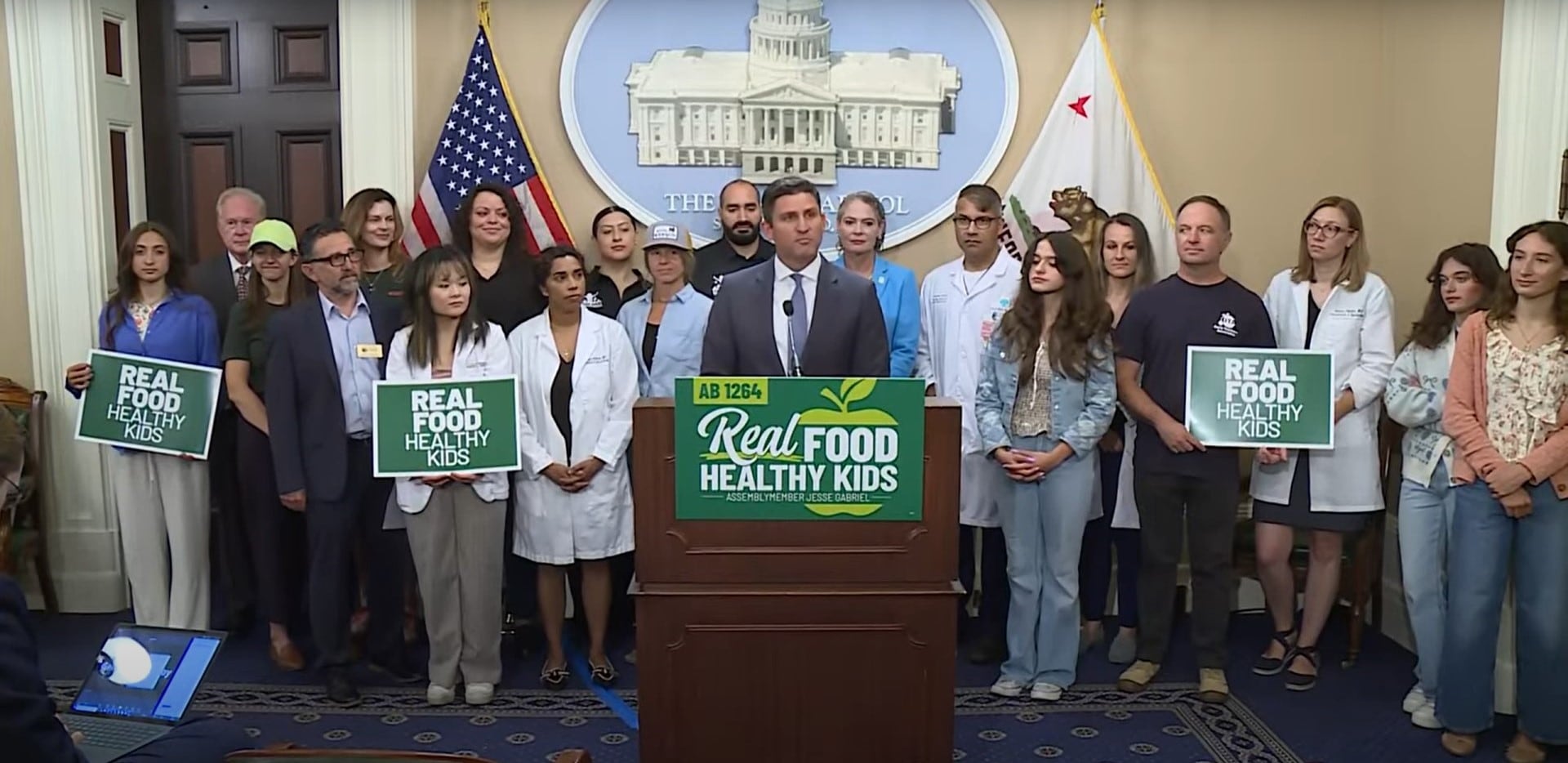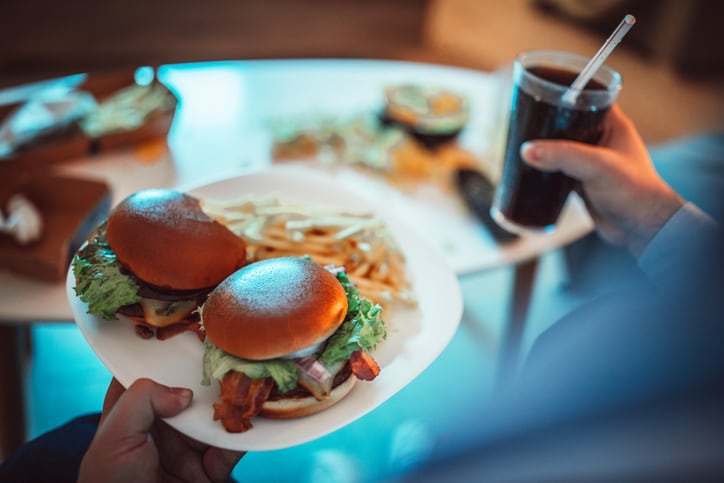California’s bipartisan Assembly Bill 1264 (AB 1264), spearheaded by Assemblymember Jesse Gabriel (D-Calif.) and co-authored by Republican Assemblymember James Gallagher (R-Calif.) and Progressive Caucus Chair Alex Lee (D-Calif.), intends to reshape access to healthier foods by removing ultra-processed foods (UPFs) from schools across the state.
For manufacturers, distributors and school foodservice suppliers, the bill signals major shifts in formulation strategies, procurement and compliance – with ripple effects anticipated nationwide.
The move comes at a time when UPFs make up the majority of calories consumed by Americans, particularly children, according to recent CDC data.
Targeted approach: Refinement over restriction
AB 1264 authorizes stakeholders – including University of California experts, the California Department of Public Health and the State Department of Food and Agriculture – to guide implementation based on evolving research.
The Legislation aims to phase out only “the worst of the worst” ultra-processed foods – items high in sugar, salt, fat and harmful additives – without banning nutrient-rich staples, like canned fruits, vegetables or Greek yogurt, for example, Gabriel emphasized during the AB 1264 press conference held yesterday.
“The definition of ultra-processed foods is really important,” Gabriel said, noting that the bill was drafted to prevent unintended consequences and allow for more strategic investments
Editor’s take: What CPGs and suppliers should do now
- Audit ingredient lists: Identify products that rely on artificial dyes, controversial additives or ultra-processing techniques
- Explore clean reformulation paths: Consider substituting ingredients with alternatives already used in stringent global markets
- Engage with K-12 buyers: Highlight how reformulated items align with AB 1264 requirements – emphasizing affordability, nutritional value and compliance.
Multinationals: Look to global recipes for solutions
During the Q&A, Gabriel advised multinational brands to consider selling in the US cleaner versions of the foods already sold abroad.
“Switch to the recipe that you use in France, switch to the recipe that you use in Switzerland, switch to the recipe that you use in Japan or South Korea or Peru,” he emphasized.
Companies nationwide already are replacing artificial dyes with natural colors and other additives that have been banned or rescinded by California and FDA.
Natural color demand, for example, is pushing suppliers like California Natural Color, IFF and Kalsec, among others, to innovate on formats that offer concentrated, shelf-stable options as a potential cost-saver for manufacturers.
FDA’s rapid approval of natural colors offers more options for companies reformulating their products. In the past four months, the agency added four natural color additives: butterfly pea flower extract (blue), Galdieria extract blue (from red algae Galdieria sulphuraria), calcium phosphate (white) and gardenia blue.
Sharp focus: Schools and equity
With California schools serving over a billion meals annually, AB 1264’s most immediate impact will be felt in K-12 programs, Gabriel said.
The stricter ingredient standards represent both a compliance challenge and a market opportunity for suppliers offering healthier, additive-conscious entrees, snacks and beverages.
Equity is a central pillar to AB 1246, Gabriel emphasized. Underserved communities, which rely heavily on school meals and affordable packaged foods, will be impacted – but also face disproportionate risk if reformulation fails to keep food affordable.
AB 1264’s ripple effect
Given California’s size and impact on the national economy, the removal of UPFs is expected to create a ripple effect to other states as school districts reevaluate procurement and suppliers align to a new baseline.
California’s impact was particularly palpable on the food industry with its ban on additives in October 2023 under the California Food Safety Act, which sparked similar bans in other states like New York and Illinois.
Patchwork state legislation around additives have potential for federal response. Currently, FDA is seeking comments to develop a uniform definition for UPFs as concerns mount over non-nutrient dense in an effort to simplify compliance across all 50 states, according to experts.
Rules over trends: Regulatory momentum builds
Though some companies voluntarily have begun removing synthetic dyes and other additives, Gabriel stressed the necessity of legislation.
“You need the mechanisms of law, of legislation and regulation to really push industry in the right direction,” he said.
The bill establishes a scientific review process led by experts from the University of California, the California Department of Health and the California Department of Food and Agriculture, ensuring that future updates remain grounded in research.
Insights from stakeholders
UPFs are correlated to obesity, type 2 diabetes and mental health issues such as anxiety and depression in children, Ravinder Khaira of the American Academy of Pediatrics said during the press conference.
“These aren’t just distant threats. They’re showing up in my exam rooms almost every day,” he said. For CPGs, his remarks reflect the growing scientific and medical scrutiny around additives and ultra-processing.
“For too long, highly processed foods have dominated School Food Services,” not because food service directors are avoiding change, but “because of industry pressure, tight district budgets and outdated policies,” Miguel Villareal with the National Farm to School Network explained.
Creating a legal definition also is critical to effectively implementing non-UPFs in school meals, added Bernadette del Chiaro of California’s Environmental Working Group
“Until we actually set a legal definition of what is an ultra processed food, we can’t begin to regulate it and phase it out of our kids’ lunches,” and “AB 1264 draws upon a library of scientific evidence linking UPFs to known health harms like diabetes, but then ties those to actual policies,” she said.




